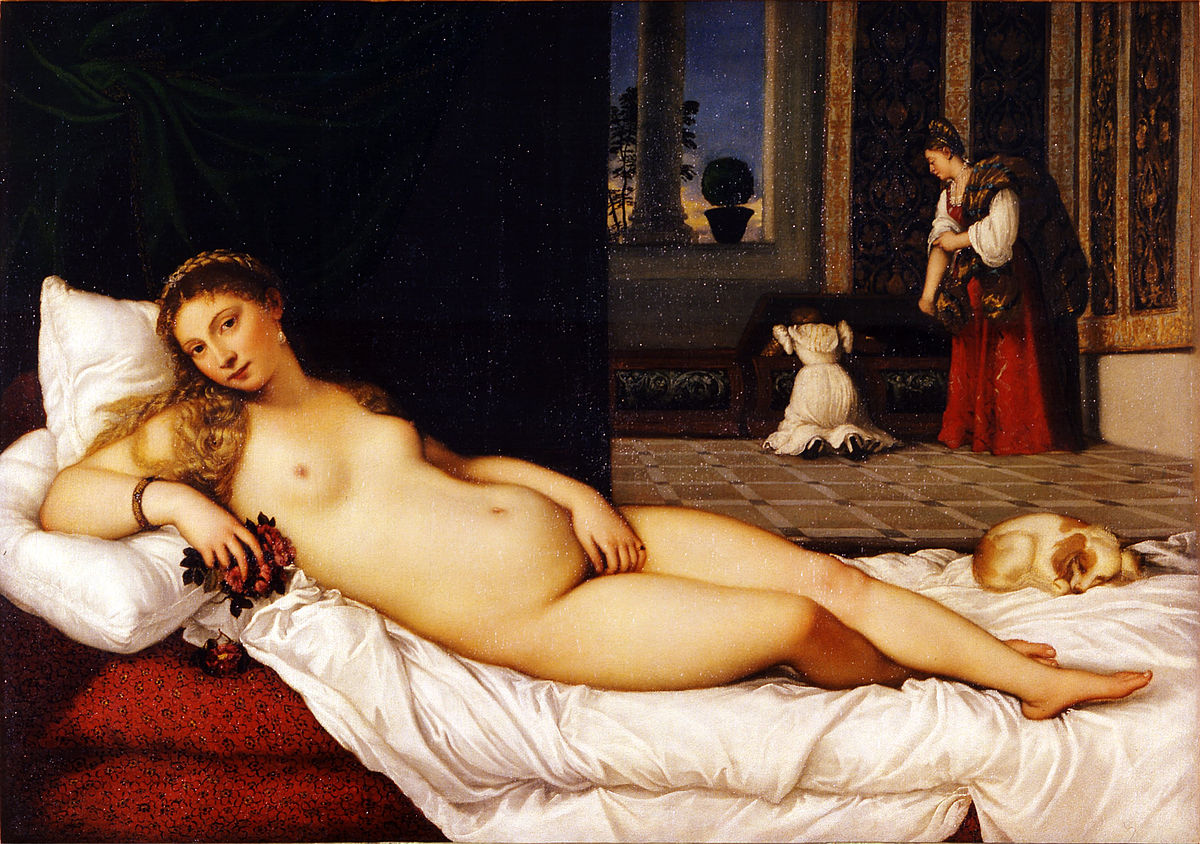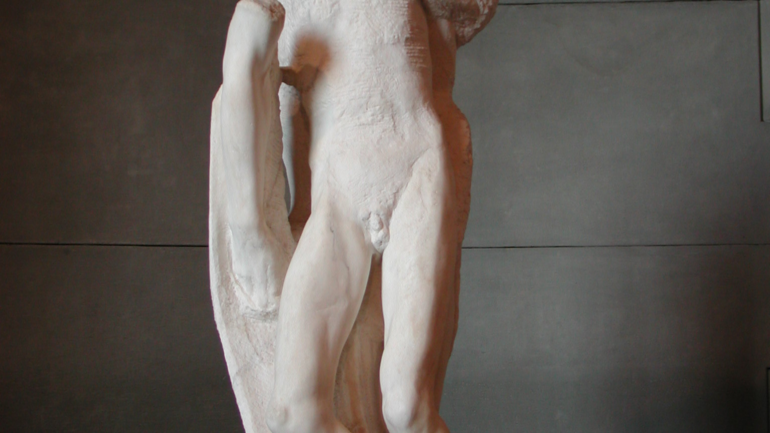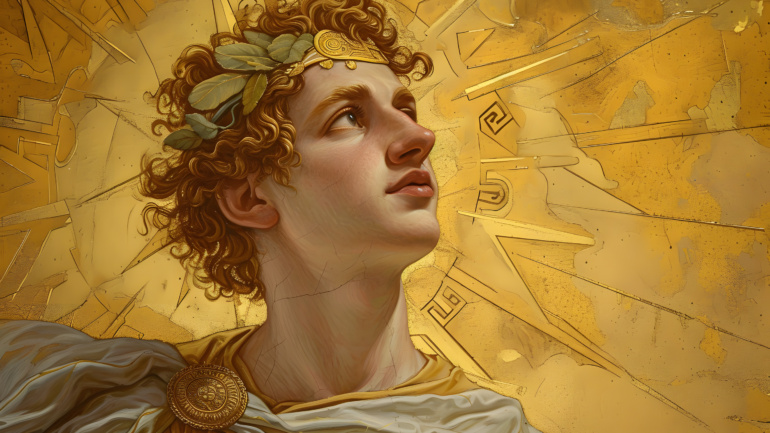Titian: The “Fourth Master” of the Renaissance
- If the “Three Masters of the Renaissance” were to add a fourth, that person would undoubtedly be Titian. Titian was the culmination of the Venetian school of painting, where all the highlights and techniques of this school reached their peak in his work. He was known as the “sun among stars” and was one of the most talented artists of his time, especially in his use of color. His influence on Renaissance painters and Western art, in general, was profound.
- Titian, whose full name was Tiziano Vecellio, was born in the mountain town of Cadore in northern Venice. At the age of ten, he moved to Venice to study under Giovanni Bellini and was a junior to Giorgione. Much of his early painting technique can be said to have come from his mentor. The best description of Titian’s works is “vivid and lifelike,” as he amplified all the characteristics of Venetian art: brighter colors, more secular themes, and more beautiful landscapes, while also introducing a new round of creativity.
- Regarding vividness, Titian’s most representative work is Venus of Urbino. Compared to Giorgione’s Sleeping Venus, the theme, composition, and the figure’s pose are almost identical. If Giorgione’s Venus was “shocking,” Titian’s version could be described as “outrageous.” Giorgione’s Venus retains a subtle and somewhat sensual tone, where the nude sleeping figure can be understood as casual or unintentional. In contrast, Titian’s Venus gazes directly at the viewer, boldly and provocatively.
- Another provocative element of Venus of Urbino is the setting in which the figure is placed. While many artists before Titian depicted gods in natural outdoor settings—reflecting their connection to nature—Titian placed Venus in a bedroom, with two maids rummaging through a chest in the background. Aside from the name “Venus,” there is no clue in the painting that suggests this is a depiction of a goddess.
- Titian’s amplification of Venetian style is also evident in his use of color. In addition to his continued use of vivid colors, he employed a more special technique—complementary colors. His religious painting The Assumption of the Virgin, located in the Frari Church in Venice, is the largest altarpiece in the city, measuring 7 meters high and 3.6 meters wide. In this work, the Virgin does not have a halo, nor does she appear in conventional religious garb, but rather as a secular beauty. The use of bright colors makes the painting a prime example of Venetian style. What’s most significant is that Titian used complementary colors to draw the viewer’s attention and create dramatic effect.
- In The Assumption of the Virgin, Titian used complementary colors in three key areas to capture the viewer’s eye, showing his bold artistic mastery. Complementary colors are inherently jarring and difficult to harmonize, yet Titian placed saints dressed in green and red on either side of the Virgin, with her bright blue cloak contrasting against the golden background. These three color pairs enhanced the triangular composition of the painting, giving it both an impactful and harmonious effect.
- At the height of his fame, Titian sought to transcend his own artistic achievements. He had become so famous that nobles from across Europe wanted their portraits painted by him, and even securing an appointment could take several years. His commissions were overflowing. It’s said that even the Emperor of the Holy Roman Empire, when visiting Titian at work, knelt down to pick up his paintbrush—a tremendous honor, indicating his immense stature. Despite this, Titian was not content and sought to push the boundaries of his artistry in his later years.
- During the peak of his career, Titian’s works were incredibly vivid, even to the point of being overly garish. However, in his later years, he began to produce much darker works. His final painting, Pietà (the Lamentation of Christ), has a color palette filled with dark, somber tones, with the bright colors virtually disappearing. The faint halo above Christ’s head and his pale, muscular body contrast starkly with the surrounding blackness. Rather than using bright colors to express sorrow, Titian’s use of dark tones adds more depth to the scene. This “dark light” represents his artistic transcendence—masterfully expressing emotion through color in a way that no longer relied on vivid hues.
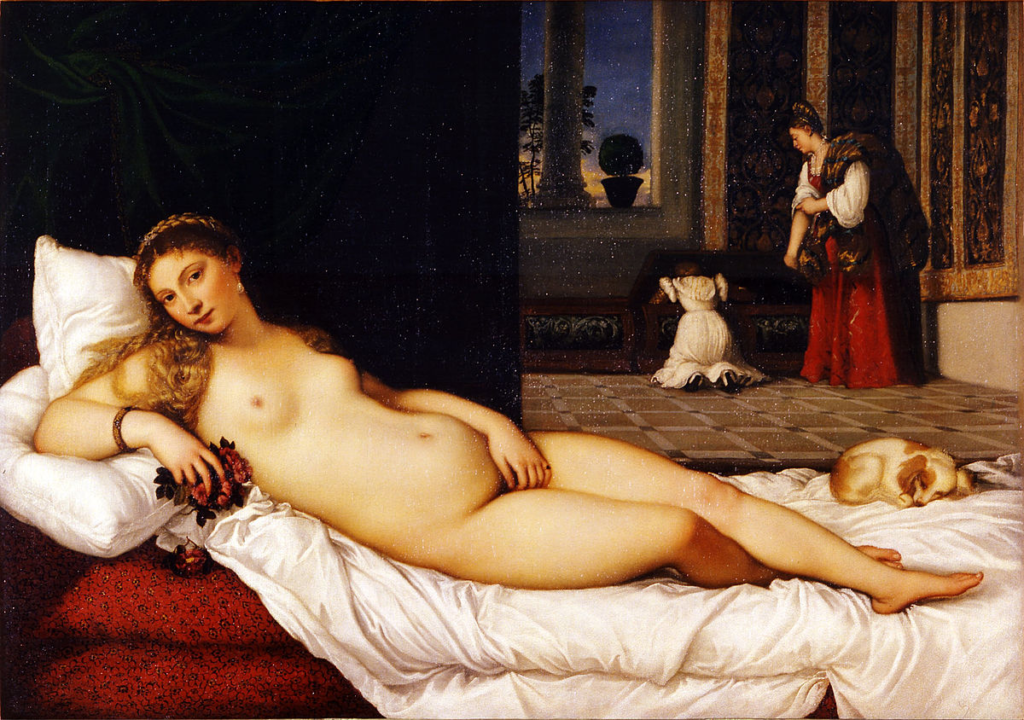
Titian – Venus of Urbino
Currently housed in the Uffizi Gallery in Florence, Italy, this painting features Venus in the title, yet there is no other clue in the painting that indicates she is a goddess.
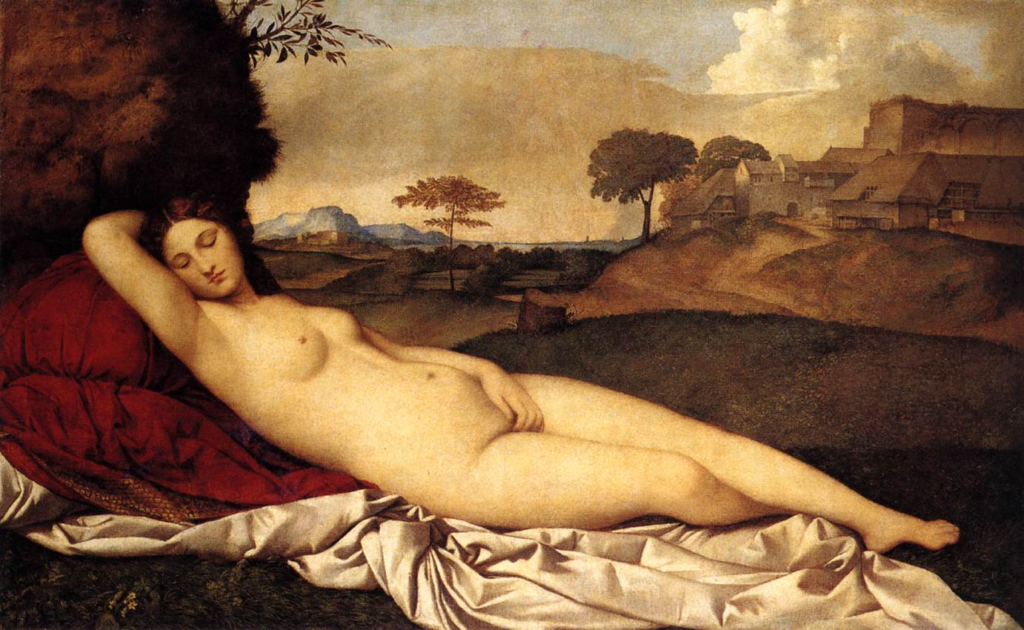
Giorgione – Sleeping Venus
Currently housed in the Dresden State Art Collections, Germany, Giorgione’s Venus is more subtly sensual compared to Titian’s Venus of Urbino.
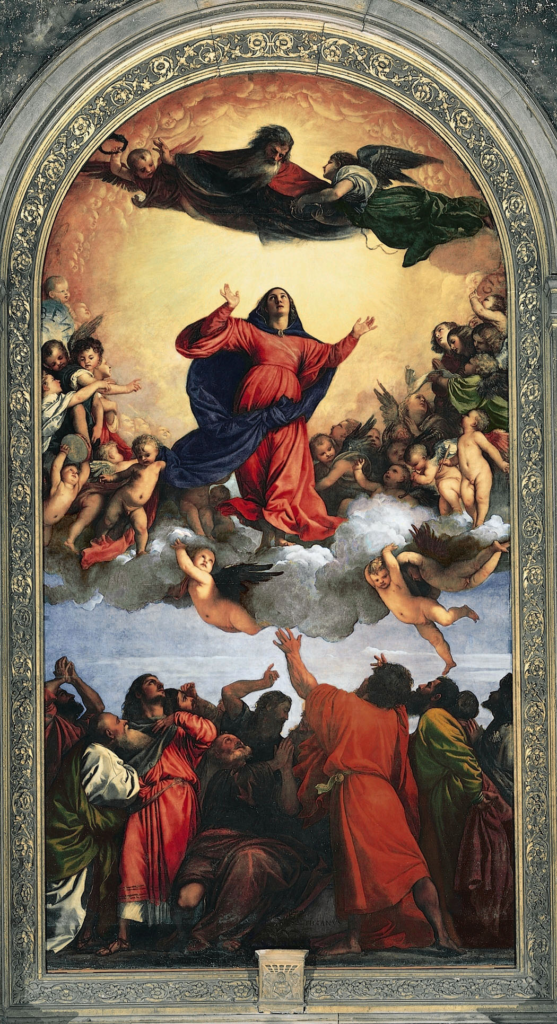
Titian – The Assumption of the Virgin
Currently housed in the Church of the Frari in Venice, Titian used three sets of complementary colors to enhance the triangular composition, creating a striking effect while maintaining harmony.
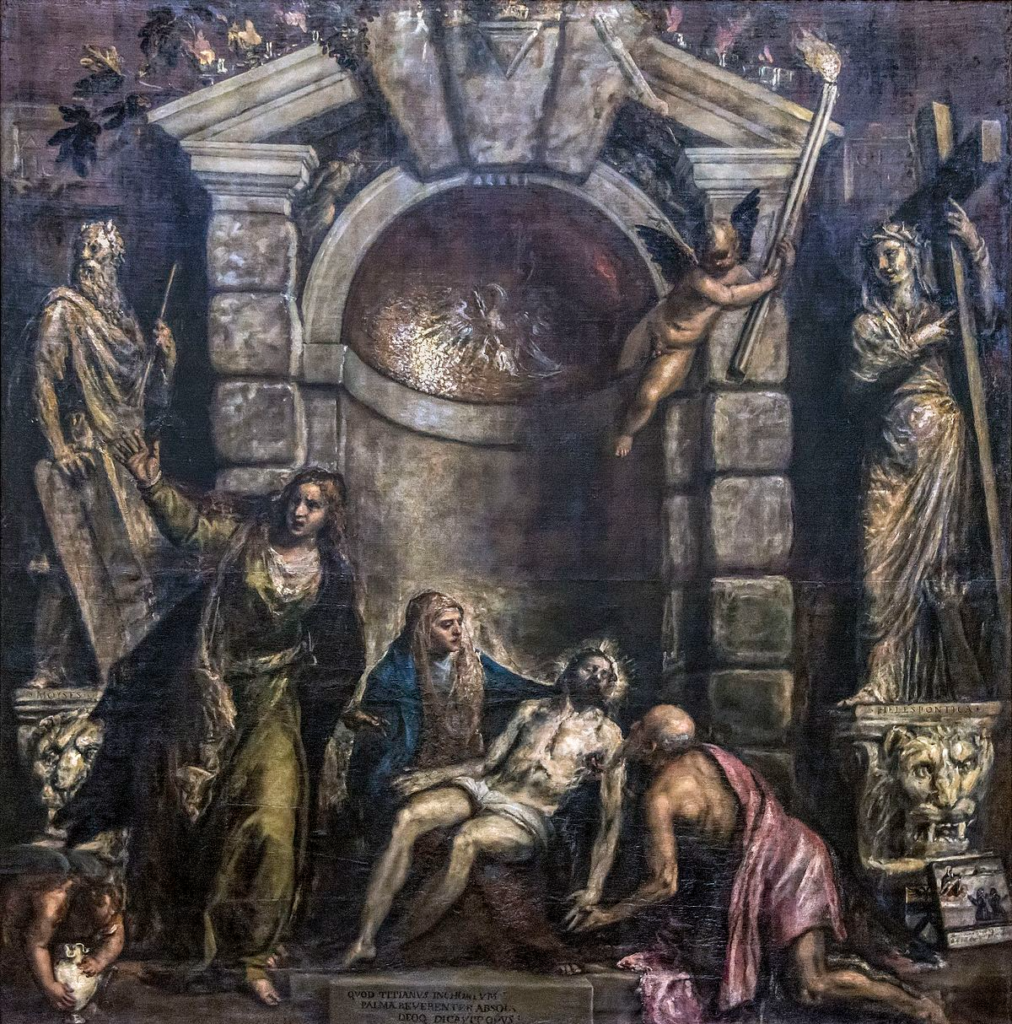
Titian – Pietà (The Lamentation of Christ)
Currently housed in the Gallerie dell’Accademia in Venice, the “dark light” in this painting represents Titian’s perfect artistic transcendence in his later years.
Tips
Best Time to View The Assumption of the Virgin
If you have the opportunity to visit Venice, be sure to visit the Church of the Frari to see Titian’s world-renowned The Assumption of the Virgin. The best time to view this masterpiece is in the evening.
This altarpiece is located on the western side of the church, behind a glass window. During sunset, the golden rays of the setting sun filter through, blending with the gold background in the upper part of the painting, creating the illusion that the top of the painting is emitting a dazzling light.
